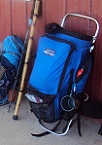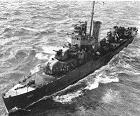11/6/45 to 11/11/45
Second A-Bomb: The chart below gives the information about the second a-bomb. It targeted Tokyo HI and scored about 8,500 points. Compared to the first, that was a good result (number one targeted Tokyo Manpower and scored about 4,500 points).
Hypothesis: Don't use a-bombs on Manpower. You need Manpower to set fires that spread to other industries. The more Manpower at a base, the easier it is to set fires (presumably). Here, the first a-bomb (which also was the first strat bombing mission vs. Tokyo) wiped out all but 2 points of Manpower. So now it's harder (I think) to efficiently set fires. Better to target a-bombs vs. HI or Resources or the like.
China: Another deliberate attack on Shanghai (around the 9th) yielded an adjusted enemy AV of less than 6k, sharply down from the 11k+ last time, and from the 28k+ the first time, about a month ago. The enemy defenses are beginning to show signs of weakness and I definitely think Shanghai will capitulate before the end of the month.
The big army from Formosa that landed in coastal China is now moving inland, nearing the first line of defended enemy bases. Dave has strong pockets at Shanghai, up around Sian, down near Vietnam (at Nanning). I don't know how much he has left in the interior (probably a fair amount), and I don't know if they are hurting for supply. I don't think the Allies can reach Chungking before the end of the game, but I'm going to try my best, simply to see what can be done.
Victory, 1945, 1946, etc.: Per the chart the Allies have 132k points, Japan has 89k, a differential of 43k.
By the end of the year, the Allied lead should be somewhere between 50k and 60k, or roughly 60% of the way to a '45 AV.
Is there an AV benchmark in 1946, such as 1:5 to 1? Or, once you reach '46, does the game simply go until the calendar reaches the ultimate end, February 28, 1946?

"Rats set fire to Mr. Cooper’s store in Fort Valley. No damage done." Columbus (Ga) Enquirer-Sun, October 2, 1880.













